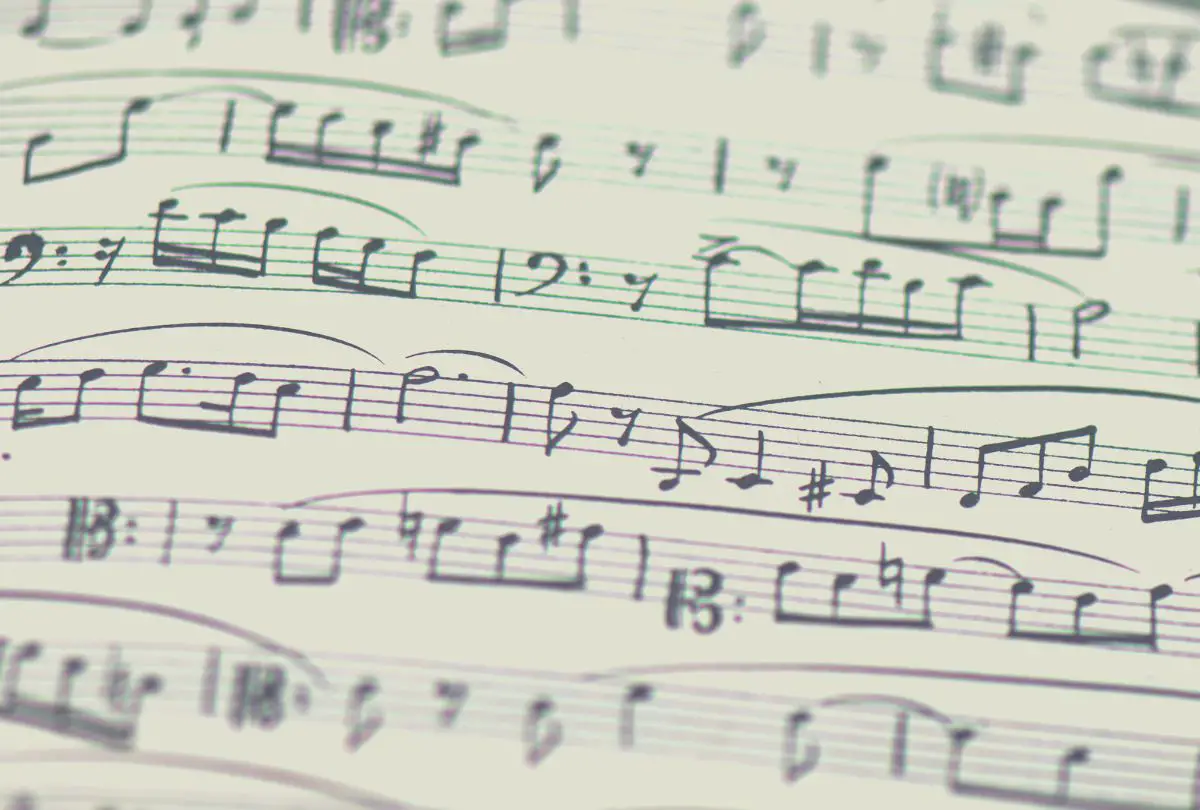Music theory makes up every song we play, sing, or hear – and taking the time to learn it can help musicians better understand and improve their craft.
As you begin to learn the essentials of music theory, keep in mind that gaining a basic understanding will take approximately 6 – 12 months.
Intermediate music theory skills generally develop within 1 – 2 years. For advanced music theory concepts, expect to spend at least 3 – 4 years learning and even longer to truly master music theory.
Reading musical rhythm
If you’re brand new to music theory, the first step to understanding music notation – before worrying about the pitches – is rhythm.
There are two types of beats in music: notes and rests. In a 4/4 time signature (called common time), a quarter note gets one beat, and there are four beats to a measure.
Other common notes are half notes (two beats), whole notes (four beats), and eighth notes (half a beat). Rests follow a similar pattern – quarter rests are one beat, half rests are two beats, and so on.
A dot after a note/rest adds half of that note/rest’s value onto the note (i.e., a dotted half note would be three beats). Try clapping simple rhythms to get the hang of reading music.
Identifying the pitch of music notes
Reading the different pitches is the next step in music theory basics. The musical alphabet is A, B, C, D, E, F, and G; a note’s letter is determined by its placement on the staff. In treble clef, the lines of the music staff from bottom to top are E, G, B, D, F.
The spaces are F, A, C, E. In bass clef, the lines are G, B, D, F, A, while the spaces are A, C, E, G. Other clefs to be aware of are alto clef and tenor clef, although they are less common.
Flats and sharps next to the notes will also lower or raise the pitch by a half step, respectively.
Understanding keys and key signatures
Although music is only made up of seven letters – plus the flat and sharp notes in between – most songs are composed using notes from one scale.
The main scale that’s used in a composition is called the key, denoted by a key signature. For example, if a song is written using only (or almost only) the notes and chords from the G Major scale, that song is likely in the key of G Major. Minor keys are also extremely common.
Learning how the different notes and keys relate to each other is also essential to understanding music theory. Understanding or even memorizing the circle of fifths can help guide musicians on how key signatures are notated, relative major and minor keys, and what chord progressions fit into each key.
Advanced music theory concepts
We’ve covered the basics, but there are so many other music theory concepts to be aware of. Learning about the different kinds of chords – major, minor, seventh, augmented, diminished, and so on – along with chord extensions and inversions will be critical in both reading and writing music.
Possessing a deep knowledge of chord progressions and modes is crucial for songwriting, especially improvisation. The more you learn about music theory, the more concepts you’ll discover to learn about next.
Putting your music theory knowledge into practice
Like any other skill, dedicating regular time to learning and practicing music theory will help lock in those abilities.
Take the time to analyze the music you hear and play, and work to understand new concepts as they come along.
Even just 20 minutes a day of music theory practice will lead to great improvements, and you’ll see all of your musical abilities improve as well.


Leave a Reply